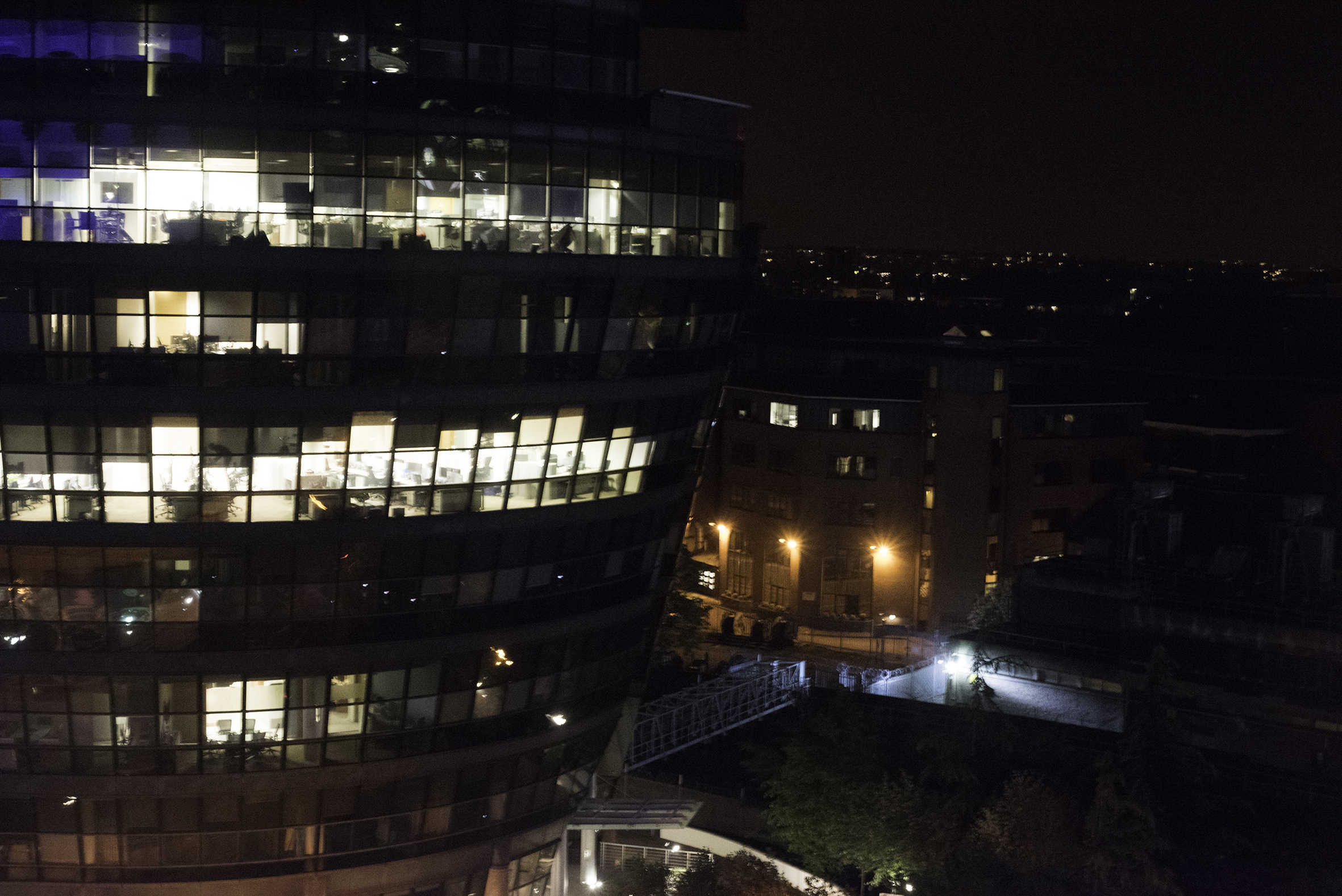
An exploration of the city as a prime motivator for intermedia analysis
Introduction
My research explores the notion of place, identity and the sonic representation of urban
spaces. It is differentiated from acoustic ecology (R. Murry Schaefer, Barry Truax,
Hildegard Westerkamp) and musique anecdotique (Luc Ferrari) in that the sound of the
environment itself is not the primary concern within the composition. What is
foregrounded is the psychological impression of the built, urban space on the individual.
Any sense of what an urban environment is emerges impressionistically through
associative and cognitive processes. Architecture and urban landscapes provide visual and
aural stimuli that can be discussed through an engagement with aesthetics and an
appreciation of the notion of symbolism with particular reference to the semantic
understanding of poietics and esthesics. As Nattiez suggests:
…a symbolic form… is not some ‘intermediary’ in a process of ‘communication’ that transmits the meaning intended by the author to the audience; it is instead the result of a complex process of creation (the poietic process) that has to do with the form as well as the content of the work; it is also the point of departure for a complex process of reception (the esthesic process) that reconstructs a ‘message.'” (Nattiez 1990 – Music and Discourse: Toward a Semiology of Music, p.17)
Coupled with any philosophical contextual analysis of the urban landscape, an
investigation into the ‘concrete’ sonic and visual worlds and the way that sound
interpolates with our perception of the city, is pertinent to understanding any study of
the urban auralscape.
Research Questions
- Can an impression of an urban-scape be constructed as a sonic experience without foregrounding the sound of the environment itself?
- Can notions of metaphor be useful in place of the ‘real’ experience?
- How has the urban landscape and the sense of place been presented in previous sonic works?
- Can urban studies, psychogeography and architecture inform the conceptual and concrete realization of an electronic musical work?
I will draw on the aesthetics of Gernot Böhme and his notion of architecture and
atmosphere, the writings of Guy Debord, Iain Sinclair, Charles Jencks, Marshall
Berman, Reyner Banham, Henri Levebvre, Walter Benjamin, Le Corbusier and (among
others) Iannis Xenakis. To contextualize my work within a musical frame I will discuss
the sense of place and identity apparent in specific compositions and more broadly those
composers whose work is associated with a sense of actual place. Elgar’s Cockaigne
(Edwardian London) Burial (21st Century London) Richard Skelton and his evocative
musical imaginings made and based on the landscape of the West Pennine Moors. Dusk
and Blackdown’s portrait/travelogue of another, darker London which began with their
debut album Margins Music or John Surman’s Cornish travelogue Road to St. Ives. These
works epitomise a range of approaches to the descriptive representation of place in
music; I envisage an open and experimental response to urban architecture and space,
evoking the form and structure of the environment through a psychological and
philosophical encounter.
It is the urban explorer, or more specifically Charles Beaudelaire’s ‘la flaneur’, that
Walter Benjamin adopts to describe the concept of the urban observer both as an
exploratory analytical tool and an emblematic figure of urban, modern experience.
Similarly, Guy Debord describes the city traveller as one who explores the urban
environment through the ‘drift’ or ‘dérive’ (any unplanned journey through an urban
landscape) where the contours of the surroundings direct the participant with the
intention of encountering authenticity and unique experiences.
“a mode of experimental behaviour linked to the conditions of urban society: a technique of rapid passage through varied ambiances.” (Guy Debord)
Research Methodology
Though specific engagement with architectural studies, urban environmental studies and
city planning I will investigate how the language and methodology of the urbanscape has
a parallel on electronic musical composition.
I will apply the concept of psychogeography to explore the cognitive, emotional and
physical impact that architecture and the constructed urban environment has on both
the integrated inhabitant and the casual wanderer. An urban environmental experience
offers a panoply of contrasting and conflicting forms, visual anomalies and audible
detail; superficially perceived as towering, brutal, sensitive, open, historical, landscaped,
modern, minimal, ornate, bland and engrossing. Interestingly, each individual perceives
this assessment, derived as it is from cumulative experience, through the filter of personal
identity and the direction and focus of the ‘gaze’.
In my music landscape is a determining presence. …there is a moment when I suddenly become aware of “where I am,” of the physical place, its light, its climate. It’s a kind of epiphany, after which everything flows and expands more easily. (Brian Eno – I DORMIENTI – Brian Eno and Mimmo Paladino 2000 ACSEditore Milan)
Through a philosophical and physical engagement with the urbanscape I will explore,
empirically and theoretically, the relationship between the urban protagonist and the
built environment. I believe there can be a sonic representation of the urbanscape
through abstract form and metaphor and I aim to provide a body of work that
provides evidence of such an association.
Through my practice as a live improvising performer and composer of electronic
music, I will apply the guitar, mixer, electronics and MAX processing abilities, which is
fundamental to my current process, within a practical framework of experimentation
for the production of unique sonic material.
I envisage a portfolio of works encompassing, electronic composition, site specific and
live performance video records, video as artefact and still photography. This may take
the presentational form of an interactive publication such as an iBook or web site. The
emphasis on the urban environment and my interdisciplinary practice would provide a
rich seam of critical possibilities for my PhD research.